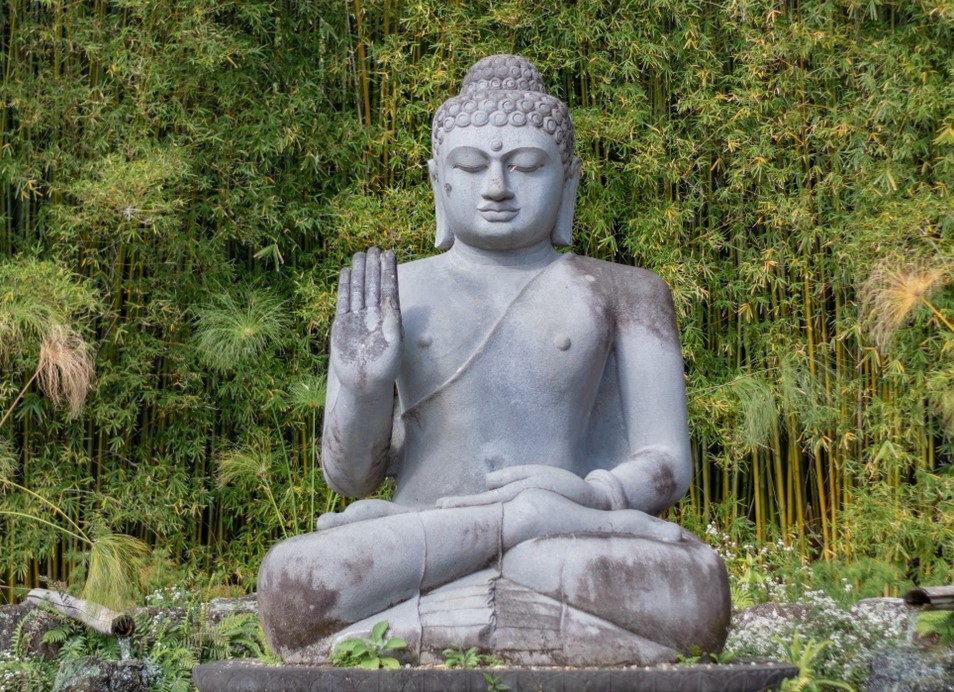What is Buddhism?

Buddhism is one of the world’s oldest religions. It is named after its founder Buddha, “the Awakened One”.
Since 1983, Buddhism is one of the officially recognized religious communities in Austria. Last year, the Austrian Buddhist Union celebrated 40 years of recognition in Austria.
The Historical Buddha
The historical Buddha, Siddhartha Gautama, was born in Northern India around 2,500 years ago. As a human being he attained enlightenment, a spiritual state of permanent bliss and peace, through training the mind and meditation. Based on this experience, he taught various methods in order to enable others to attain this same state of mind. In our centre you are warmly invited to get to know these methods which contribute to both short-term as well as long-term balance and wellbeing.
The Essence of Buddhism: Liberation from Suffering through one’s own Resources
Buddhist practice consists of freeing one’s own mind from negative attitudes such as greed, envy and anger. The Buddhist teachings, called Dharma, are based on the Four Noble Truths:
- The truth of suffering – the imperfection of the human condition.
- The truth of origin (of the cause of suffering) – fundamental ignorance causes us to cling to our ego.
- The truth of cessation of suffering – we can overcome it by eliminating this ignorance.
- The truth of the path to liberation – cessation of suffering can be attained by means of the threefold training of ethical discipline, meditative concentration and wisdom. Finally, we will be able to recognize the true nature of existence and reach Nirvana, a condition beyond all suffering.

“To avoid all evil, to cultivate good, and to cleanse one’s mind
— this is the teaching of the Buddha.”
(Dhammapada, Vers 183)
The Spread of Buddhism
For all Buddhists, the Four Noble Truths are the foundation. However, the Buddha explained his teaching in various ways to meet the different interests and dispositions of his students. This led to the development of various schools with different areas of philosophical and methodological emphases.
In South and South-East Asia, the predominant tradition is the Theravada, the School of the Elders. It is based on the writings of the so-called Pali Canon, the oldest written records of the Buddha’s teachings.
In Mahayana Buddhism, the “Great Vehicle” that spread in various forms to Central and East Asia, the enlightenment of all living beings is the goal of the religious practice. The ideal is the Bodhisattva. Through the development of wisdom combined with love and compassion, the Bodhisattva strives for perfect enlightenment in order to optimally assist all other beings on their path. Practices for developing and cultivating altruistic attitudes such as love and compassion are the essence of this path.
From the Mahayana evolved, among others, Tantric Buddhism (Vajrayana), which is practised mainly in Tibet and which enables the adept to attain the state of Buddhahood particularly fast. On the basis of strong compassion, even subtle levels of the mind can be influenced by appropriate meditation techniques. However, these methods should be practised only after intensive preliminary practices under the guidance of a qualified teacher.
The different traditions and schools that have been formed over the centuries under the influence of different cultures complement and respect each other. Today, Buddhism is practised not only in Asia but also increasingly in the West by a total of about 500 million people.
